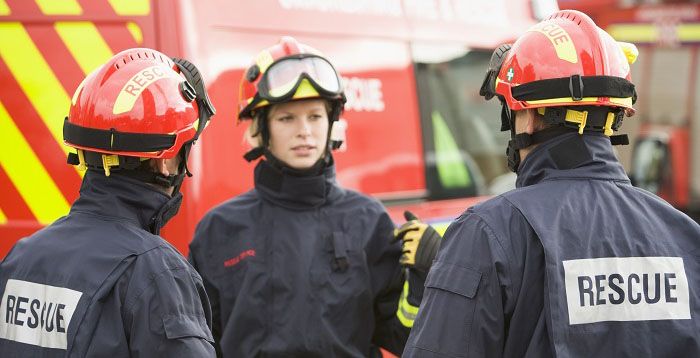This Case Study is based on a series of interviews with Colin Barnes in the autumn of 2018. Colin has been involved in recruiting a more diverse workforce with the Greater Manchester Police and is now part of a team that recruits more diverse people into the Greater Manchester Fire & Rescue Service.
What is the diversity aim?
The Greater Manchester Fire & Rescue Service aims to bring in more diverse applicants.

Why diversity?
- They are keen to provide the best service, and know that a fire service that is representative of the community will be better able to serve it
- The government has set diversity targets for the fire service
- The public expects a fire service representative of the community
- The recruitment process needs to change as the role of fire fighter has changed significantly over time
Starting situation
There hadn’t been a serious recruitment drive for a long period and new recruits came in by responding to on line advertising. The selection process involved a fitness test and a panel interview, typically with 5 people from current staff. Current staff were predominantly white male, as were new applicants.
Diversity Interventions
1. Changes to the recruitment process
The diversity team started a strategy of community engagement; visiting community events and locations and engaging in face-to-face conversations.
Impact of changes to the recruitment process
- At the precise moment in the conversation where people hear about the changes in the role of fire fighter, they start showing an interest
- Almost all candidates from underrepresented groups that have applied say that they would not have done so without the conversation
- The stronger applicants are typically those that have had those face to face conversations
- Now that there is a stronger network in the community, this is already leading to new referral
2. Changes to the selection process
The diversity team invites all those that have registered their interest at a face-to-face event to a taster day, thus taking away any barriers for application. At the taster day information is given about the selection process to ensure all applicants have the same information about selection.
The selection process now includes an assessment process, structured interviews and a wider group of interviewers (8-12) from a variety of backgrounds. These new measures allow for less bias in selection.
Impact of changes to the selection process
- The number of candidates hired from underrepresented groups has significantly increased and is expected to increase further as perceptions about the role of fire fighter changes further.
- Fire fighters involved in the selection say that candidates from underrepresented groups are typically the stronger ones.
3. Initiatives to increase retention
The on boarding process now includes education about diversity and (in)appropriate behaviour to make sure that people feel included from the start. Staff networks for diverse groups have been set up.
Impact of initiatives to increase retention
- Many practical issues have been raised in the staff networks and have been solved. There have been changes to facilities such as shower- and changing rooms and toilets and changes to food and work schedules. A dress review is under way.
- Retention of new recruits has already improved, which has led to cost savings
- Fire fighters from diverse backgrounds encourage others from their community to join
4. Creating engagement from the leadership
Engaging the leadership was a vital part of the programme. If leaders are on board diversity can become part of the core business. Speakers were invited, such as a female RAF pilot. Leaders are now invited to graduation days of new recruits and positive stories about achievements of underrepresented groups are regularly shared.
Impact of initiatives to engage the leadership
- Leaders have seen that women are effective in traditional male roles
- Leaders have seen that diverse recruits bring new skills
- Overall leaders are more aware of the issues women come across
- Leaders can see organisational results don’t suffer, or even improve
5. Creating engagement from staff
Initially current staff were sceptical, believing that diverse recruitment meant lowering standards. So staff were invited to be involved in the taster days, and the selection process, and their feed back was used to fine tune the new selection process.
Impact of initiatives to engage staff
- Being involved totally changed perceptions at the fire stations. They saw with their own eyes standards were high and that in fact candidates from underrepresented groups bring additional skills that are key in liaising with the communities they work in.
- Initially not many crews volunteered to help with the selection process, but once they heard about positive experiences of others they were all keen to sign up.
Future plans – 2019 and beyond
So far results have been good but recruiting staff from underrepresented groups is an ongoing process.
Next steps include:
- Wider measures to ensure diverse teams are seen as part of the core business; a more national approach is expected
- Focus on retention of new staff: to ensure the investment in recruitment is cost effective eg. By ensuring people from underrepresented groups are retained, recognised for achievement and progress at the same rate as other staff
- Review shift patterns to increase flexible working options
- Review maternity leave policies



